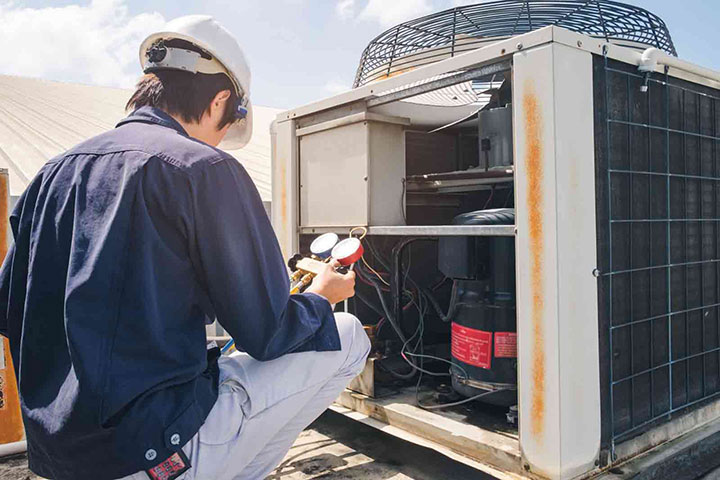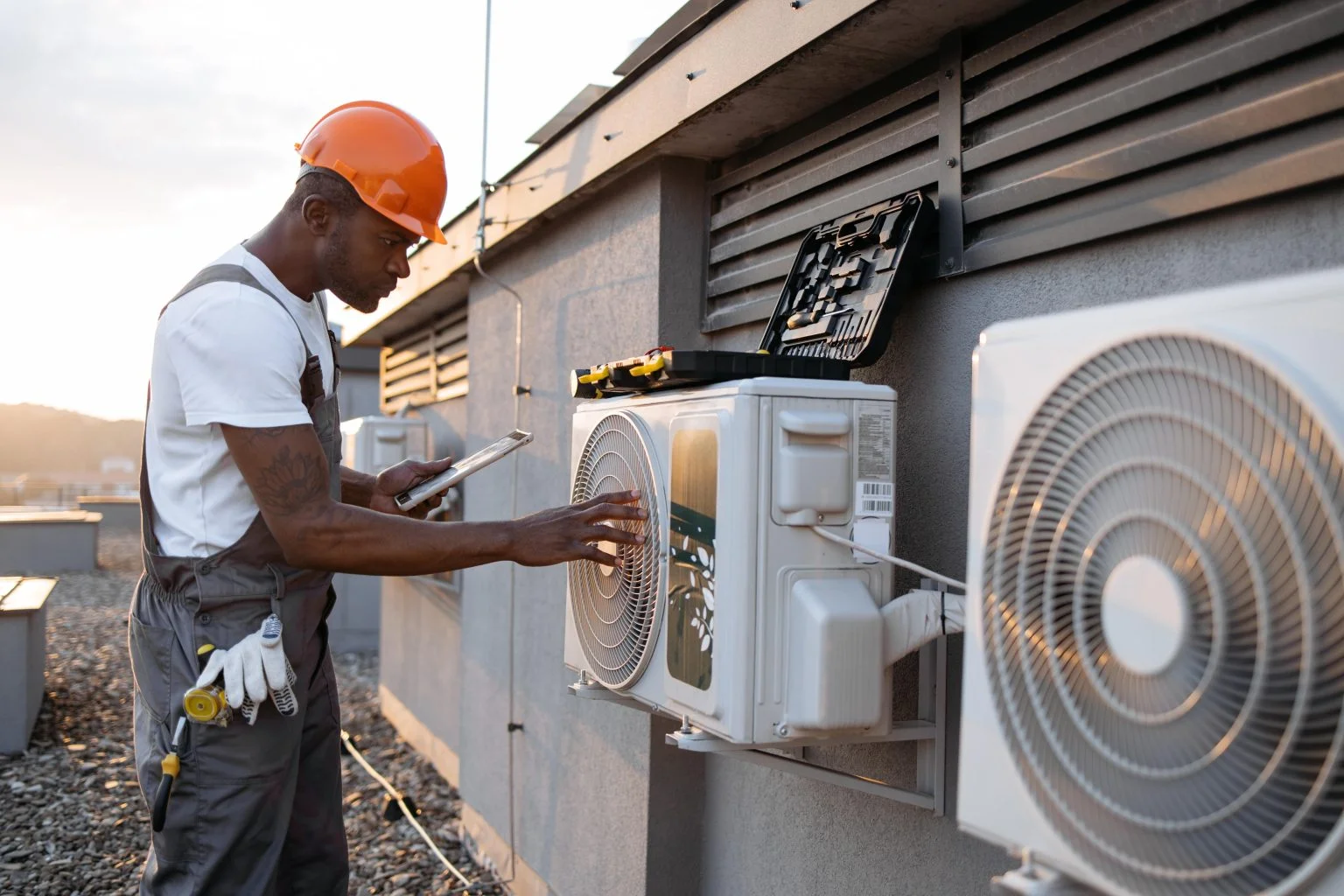Elevate Your Home’s Efficiency with Routine heat pump service
Elevate Your Home’s Efficiency with Routine heat pump service
Blog Article
Exactly How a Heat Pump and Heater Interact to Maximize Your Home's Heating Efficiency
Recognizing just how a warmth pump and heating system interact is vital for home owners seeking reliable home heating services. Each system has its strengths, giving a well balanced technique to home comfort. The heatpump masters moderate temperature levels, while the heater delivers fast warmth throughout extreme cold. This synergy not just reduces energy expenses yet likewise enhances the lifespan of both appliances. What variables influence this cooperation, and just how can property owners optimize their benefits?
Comprehending Warmth Pumps: Just How They Function
Although lots of people may be unfamiliar with their internal operations, warm pumps play an essential function in contemporary heating unit. These tools operate by moving warmth from one area to an additional, making use of the concepts of thermodynamics. In chillier months, a heatpump extracts warm from the outdoors air, ground, or water, and transfers it inside your home to warm the space. On the other hand, during warmer months, it can reverse the process, working as an a/c unit by expelling heat from inside to the outside.Heat pumps contain an evaporator, growth, compressor, and condenser shutoff. The cooling agent within the system absorbs warmth as it vaporizes at reduced temperatures and pressures. The compressor after that increases the pressure and temperature level of the cooling agent, permitting it to launch heat as it condenses. This reliable procedure can significantly minimize energy usage contrasted to typical home heating approaches, making heat pumps a sustainable option for environment control in homes.
The Role of Heaters in Home Home Heating
Heating systems play a necessary role in home heating by supplying a trustworthy source of heat throughout the chillier months. They operate by creating heat with combustion or electrical resistance, dispersing it throughout the home through ducts or glowing systems. The efficiency of a heater is typically gauged by its Annual Gas Use Effectiveness (AFUE) rating, which shows how properly the unit converts fuel right into heat.Furnaces can use various energy sources, consisting of natural gas, electrical energy, oil, or propane, permitting house owners to choose the most suitable alternative for their demands. Unlike heatpump, which might battle in extreme cool, heaters maintain constant performance, guaranteeing that interior temperatures stay comfy regardless of outside conditions. In addition, contemporary heaters commonly come geared up with sophisticated technology, such as clever thermostats and variable-speed blowers, enhancing their performance and responsiveness. This flexibility makes heaters an essential element in all-inclusive home heating strategies.

Benefits of Using Both Systems With Each Other
Combining the staminas of both heaters and heatpump can lead to a much more efficient and effective home heating service. Utilizing both systems permits homeowners to benefit from the warm pump's power effectiveness throughout milder temperature levels while counting on the furnace for even more severe cold problems. This dual technique can substantially decrease power prices, as warm pumps eat less electricity than typical home heating techniques when temperature levels are moderate.Additionally, using both systems with each other can improve convenience degrees in the home. Heat pumps can supply consistent, even home heating, while furnaces can promptly increase ambient temperatures when needed. The combination of both systems can expand the lifespan of devices by decreasing wear and tear on each system, as they share the work. Inevitably, property owners can take pleasure in a balanced, cost-efficient heating remedy that changes perfectly to differing weather conditions, guaranteeing a cozy and welcoming home throughout the winter months.
Exactly How Warmth Pumps and Furnaces Complement Each Other
They develop a complementary home heating system that makes the most of effectiveness and convenience when homeowners incorporate warmth pumps and furnaces. Warm pumps operate by transferring warmth from the outdoors air or ground, making them highly reliable in modest environments. They stand out during milder temperature levels, supplying economical home heating. On the other hand, heating systems produce warm via combustion or electrical resistance, supplying solid, instant heat during extreme cold conditions.The mix of these two systems allows for dynamic changes based upon temperature level fluctuations. During warmer months or milder wintertime days, the warm pump can take the lead, preserving power and lowering prices. As temperatures decline, the heater can effortlessly involve, making sure consistent warmth throughout the home. This synergy not just maximizes energy usage however likewise enhances the lifespan of both systems, as each unit runs within its excellent efficiency visit the site range. Together, they create a balanced atmosphere that adjusts to differing climate demands.
Maximizing Efficiency: Tips for Homeowners
Property owners can enhance their home heating efficiency via numerous useful strategies. Developing a regular upkeep routine, integrating clever thermostat technology, and executing effective insulation and securing solutions are key steps. These actions not only boost convenience however also minimize power costs.
Routine Upkeep Arrange
To assure optimal heating performance, establishing a routine maintenance timetable is necessary for any home. House owners should focus on routine assessments of both heatpump and heaters to determine peak performance. This consists of transforming air filters every one to 3 months, as clogged up filters can considerably reduce effectiveness. In addition, scheduling expert maintenance at the very least yearly allows professionals to identify and resolve prospective concerns prior to they rise. Homeowners need to also clean the warm pump's exterior system to protect against particles buildup that can impede airflow. By adhering to a routine maintenance schedule, house owners not just boost their heating systems' efficiency but also expand their lifespan, resulting in higher comfort and decreased power prices throughout the chillier months.
Smart Thermostat Combination
Integrating a smart thermostat into a home heater can substantially boost energy efficiency, specifically as it allows for precise control over temperature setups. These devices can find out the property owner's routine and choices, instantly adjusting the temperature level to maximize convenience while minimizing power use. For example, they can decrease heating during times when the home is empty, lowering unnecessary consumption. Several clever thermostats also supply real-time power use information, allowing homeowners to make informed decisions regarding their heating routines. Additionally, remote accessibility through smart device apps permits customers to readjust settings from anywhere, making certain the home is warm upon return. In general, smart thermostat combination not just improves convenience however significantly adds to energy cost savings and effectiveness.
Insulation and Sealing Solutions
Smart thermostats play an important role in energy performance, but their efficiency can be greatly boosted by correct insulation and sealing services. Property owners need to prioritize protecting attics, wall surfaces, and floors to minimize heat loss. Top notch insulation products, such as spray foam or fiberglass, can considerably boost thermal resistance. In addition, sealing gaps around windows, doors, and ducts stops cold air infiltration and heat getaway. Weatherstripping and caulking work techniques for attending to these leakages - furnace replacement. Routine evaluations for air leakages, in addition to using blower door tests, can aid recognize trouble locations. By purchasing insulation and securing, house owners can maximize the efficiency of their furnace, eventually causing reduced energy consumption and reduced energy expenses
Usual Misconceptions Regarding Heat Pumps and Furnaces
What misunderstandings surround warm pumps and furnaces? Many people mistakenly believe that heat pumps are ineffective in colder climates. In truth, modern warmth pumps are designed to operate successfully even in reduced temperature levels, providing trustworthy home heating throughout winter season. An additional typical myth is that heaters are constantly extra efficient than heatpump. This depends on the specific power sources and performance ratings of the devices in question. Some may also assume that utilizing both systems at the same time is unneeded, but actually, this combination can enhance heating performance, specifically during extreme climate condition. In addition, people frequently presume that warm pumps require continuous upkeep, when in reality, they have comparable maintenance needs to hop over to these guys standard furnace. By exposing these misconceptions, homeowners can make even more enlightened decisions regarding their home heating choices, inevitably resulting in enhanced comfort and energy effectiveness in their homes.
Upkeep Considerations for Combined Systems

Frequently Asked Inquiries
Can Heat Pumps Work Effectively in Incredibly Cold Climates?
Heatpump can struggle in extremely chilly climates because of decreased effectiveness and heat removal limitations. Nonetheless, developments in technology have actually brought about models designed for far better efficiency in such problems, improving their stability in harsh settings.
How Much Time Do Warmth Pumps and Furnaces Usually Last?
Heatpump normally last 15 to two decades, while heaters have a life-span of 15 to three decades. Normal upkeep can extend their longevity, making certain efficient procedure and decreasing the demand for early replacements.

What Is the Typical Price of Putting Up Both Solutions?
The average cost of installing both check here a heat pump and a furnace usually ranges in between $5,000 to $10,000 - furnace replacement. Variables influencing this price consist of system dimension, installation intricacy, and local labor rates
Are There Tax Obligation Rewards for Utilizing Energy-Efficient Home Heating Equipments?
Several house owners inquire about tax obligation rewards for energy-efficient heating unit. Numerous federal and state programs often provide credit reports or rebates, motivating the fostering of lasting technologies to reduce power usage and promote ecological duty.
Just how Do I Select the Right Size Heatpump and Heater?
Choosing the best dimension warmth pump and heater includes computing the home's square footage, considering insulation top quality, and examining local environment. Consulting an expert can ensure optimal system performance and power performance based upon specific needs. furnace replacement. Understanding how a warmth pump and heater job with each other is crucial for homeowners seeking effective heating services. In cooler months, a warm pump extracts heat from the outdoors air, ground, or water, and transfers it indoors to heat the living area. When property owners incorporate warm pumps and heating systems, they develop a complementary heating system that maximizes efficiency and convenience. Warm pumps run by transferring heat from the outdoors air or ground, making them highly reliable in modest environments. Heat pumps can have a hard time in very cool climates due to reduced efficiency and warm removal constraints
Report this page